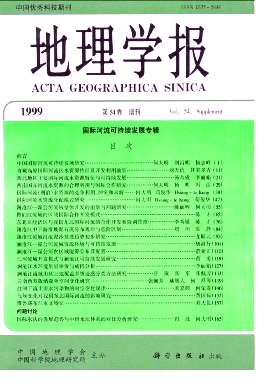JIANG Zhong cheng
Abstract The cycle of CO2-vater-calcium in the karst dynam is system is able to drive the elementmigration of the karst environments The element migration can be divided into foiw and migration of elements and backw and migration of elements When karst dynamic system gainCO2from ahnosphere or soilair, afonvard migration of element soccurs with the dissolution of the carbonate rocks in water. If some carbon dioxide escapes from thewater, a backw and migration of elements occurs with the depo sition of calcium carbonate. The ellementmigration in karst area is sensitive to the variation of the karst dynamic conditions CO2 content in soil varies with seasons With the increase of CO2 content in soil, pHvalue of water gets down, and Ca2+ (also Mg2+ in dolomite) content in karst water increases Under the waim and humid environments, karst dynam is conditions exihitites strongly, and a high solution rate occurs, then soluble CaCO3 and CaMg(CO3)2 in rocks can be dissolved quickly. As a result, there is lower Ca and Mg content in soil than that in semiarid area.For example, Ca0 and MgO contents in soil in Guilin are only 1 .51% and 1.13% respectively, b u t in Beijing, they are 8.34% and 4.34%. This regulation can be extended to deep soi1s. The higher solution rate, the stronger element migration happens There are different element m igration features in different vegetation conditions. For example, the content of trace elements in karst water is low in bare rock area, but the content of trace elements in karst water in the dense forest ismuch higher. The highest temporary hardness of spring water in the dense forest can reach 19 German degree, and the insoluble Fe, Si, A1, CoandMn can also be partly dissolved into karst water. The geochem ical background of rocksplay an important role in the elementm igration of the environments Ca (also M gin dolour ite) content in the carbonate rocks is high, so the karst areas becom a calcium-rich and a little alkaline geochem ical environm ents with elementmigration. For examp1e, there are calcareous soi1 where its chemical composition has a close relation with the karst processes, high hardness karst w ater, and enriched calcium trees The element migration processes are not same in different carbonate rocks. There is a higher karst water hardness in dolourite than that in linestone, And the maimconstituents and some trace elements increasewith the depth in soilof dolomite area, but no gradual change law of elements in soilprofile of limestone area. The relative abundant background value of trace elements in the argillaceous and silicaeous carbonate rocks also can result in the relative high m ineral nutritious elements in water, soil and vegetation.
